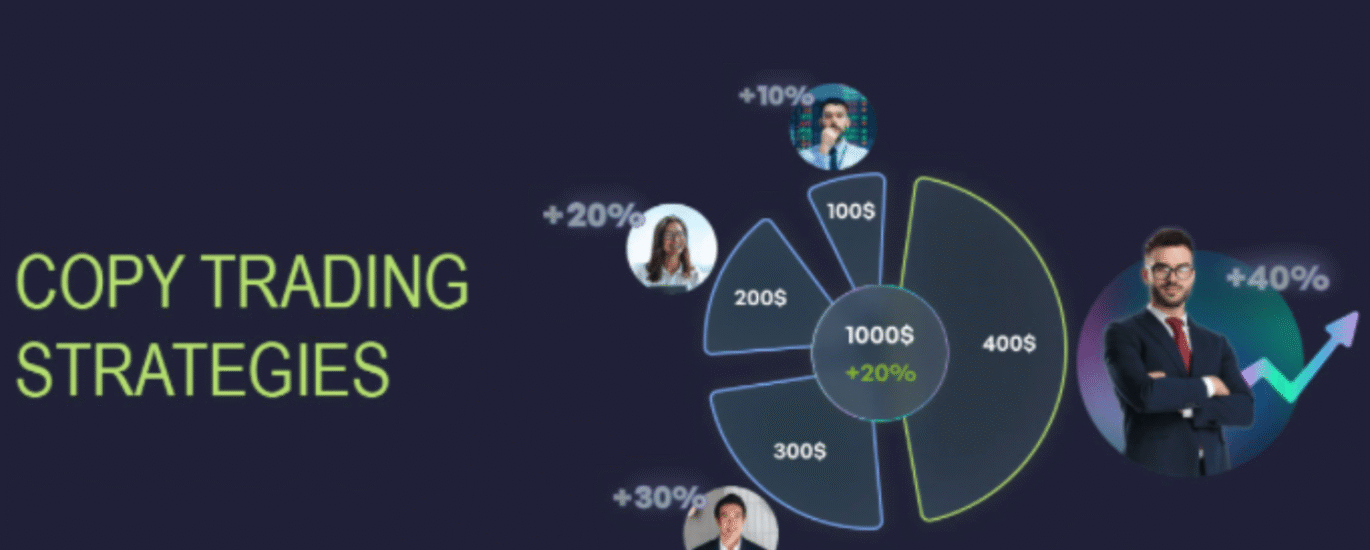Copy trading has emerged as a revolutionary approach for investors seeking to participate in financial markets by automatically mirroring the trades of seasoned traders. While this innovative method broadens accessibility to investing, it’s crucial to acknowledge the inherent risks before diving in.
The allure of minimal experience required and the potential for easy profits draws many to copy trading. However, it’s important to remember that even accomplished traders experience losses, and past performance doesn’t guarantee future success. Before embarking on this path, carefully weigh the potential drawbacks, including market volatility, dependence on others’ decisions, and the risk of substantial losses. Understanding these challenges will empower you to make informed decisions about whether copy trading aligns with your risk tolerance and financial objectives.
Many investors find copy trading appealing because it requires minimal experience and seems like an easy path to profits. But remember that even successful traders face losses and there’s no guarantee their past performance will continue. You might wonder: “Is automatically following another trader’s moves really the right strategy for my financial goals?”
Before you start copy trading it’s essential to weigh the potential drawbacks including market volatility dependence on others’ decisions and the risk of substantial losses. Understanding these challenges will help you make smarter choices about whether this investment strategy aligns with your risk tolerance and financial objectives.
What Is Copy Trading and How Does It Work
Copy trading enables you to automatically replicate another trader’s positions in your own account. The system mirrors the trades of experienced investors by executing identical orders based on their trading activities.
Key Features of Copy Trading Platforms
Copy trading platforms offer essential functions for seamless trade replication:
Real-time synchronization of trades between source trader accounts
Customizable risk management settings for position sizes
Performance tracking dashboards with detailed statistics
Multiple trader selection filters based on risk levels, returns & strategies
Automatic stop-loss protection to limit potential losses
Proportional trade allocation based on investment amounts
Popular Copy Trading Networks
Social trading feeds displaying live market activity
Transparent performance metrics for trader evaluation
Risk scoring systems to rate trader reliability
Diverse asset offerings including stocks, forex & crypto
Educational resources for strategy development
Mobile apps for monitoring positions anywhere
Network Feature User Benefit
Copy Ratio Shows percentage of copiers making profits
Risk Score Rates traders from 1-10 based on volatility
Max Drawdown Displays largest historical account decline
Win Rate Indicates percentage of profitable trades
Profit/Loss Reports actual returns over specific periods
Main Risks of Copy Trading
Copy trading exposes investors to specific financial risks that extend beyond traditional trading challenges. Understanding these risks helps create realistic expectations and develop appropriate risk management strategies.
Over-Reliance on Other Traders
Following expert traders creates dependency on their decisions without developing personal trading skills. Many copied traders experience performance fluctuations that affect your account balance directly. Market conditions change rapidly, and successful traders can face losing streaks that impact multiple copying accounts simultaneously.
Limited Control Over Trades
Copy trading platforms restrict your ability to modify individual trade parameters. The automated system executes trades at different prices than the original trader due to:
Delayed order execution
Price slippage between accounts
Market liquidity variations
Different broker spreads
Time zone differences
Hidden Fees and Costs
Copy trading involves multiple cost layers that reduce overall profitability:
Fee Type Impact on Returns
Platform fees 1-2% annual management fee
Performance fees 5-20% of profits
Spread markups 0.1-2 pips per trade
Currency conversion 0.5-1% per transaction
Additional expenses include:
Overnight holding costs
Inactivity fees
Withdrawal charges
Account maintenance fees
Premium feature subscriptions
Each copied trader generates separate transaction costs, multiplying your total expenses based on the number of traders you follow.
Understanding Trading Style Mismatch
Trading style compatibility affects copy trading success rates by up to 45%. Misalignments between your approach and the copied trader’s strategy create performance gaps that impact returns.






